For a while now, garment printing enthusiasts have been predicting that maybe Cricut infusible ink would render sublimation transfers obsolete. And yet for some reason, sublimation transfers refuse to go away.
Perhaps it’s because people have caught on to the conception that Cricut’s new line of infusible ink transfers is simply a pre-printed form of sublimation transfers. However, it is no surprise that Cricut has been reluctant to admit this.
In many ways, the two techniques resemble while still showing numerous significant distinctions. And before you decide on which technique to use, it’s important to familiarize yourself with the similarities and contrasting aspects of each.
Join me as I unravel this comparison between sublimation and infusible ink transfers.
The Similarities between Cricut Infusible Ink and Sublimation
Finished Results

The finished designs of both Cricut Infusible Ink and traditional sublimation are very identical, not surprisingly.
Both techniques involve heating the ink and turning it into gas particles which penetrate the substrate and bond with the polymer in the polyester. The ink then cools back to a solid form with the fibers of the base material and becomes part of it forming the image.
This results in permanent images with no change to the feel of the fabric and zero obvious signs of wear, cheeping, flaking, or peeling cosmetic defects.
In both cases, the images are bright and colorful with upscale clarity and details that come across well.
Blank Materials
Another resemblance between the two methods of heat transfers is that both need a poly-based blank material with a polyester composition of at least 50%. The polymers in the polyester will bond with the infusible or sublimation ink to form a bright, fade-free image.
Both techniques are limited to white or light-colored blank materials. The inks used are usually translucent and rely on the background to give a base color and brightness to the final design. Therefore, white blanks and other light colors will produce the most vibrant and colorful designs.
Transfer Sheets


You will also like to note that infusible ink sheets as well as printed sublimation transfer sheets appear dull and faded prior to transferring. But once transferred they both result in brilliant designs that are full of color.
Just like the design on infusible ink sheets, sublimation transfers must also be reversed before transferring to the base material.
Heat Press Required
It is also worth mentioning that each of the two techniques involves heat transfers that require heat application of about 385°F – 400°F (195°C) for 40-60 seconds.
Differences between Cricut Infusible Ink vs Sublimation
Equipment



Although both procedures require a heat press, Cricut infusible ink transfers involve cutting and weeding which calls for a cutting machine.
Meanwhile, to carry out a sublimation transfer, you will need a sublimation printer to print the image onto sublimation transfer sheets.
Variety of Patterns and Colors



Cricut Infusible Ink sheets are only available in a limited number of pre-printed patterns and solid colors. Therefore, you need to cut your designs out of the fixed color choices and patterns of Infusible Ink sheets. You can only customize by cutting designs from the sheets, weeding them, and then pressing them onto your blank materials at intervals.
On the other hand, sublimation ink comes in diverse colors, every drop of ink from the nozzles can be of different colors. Sublimation printers work by mixing base colors and using recipes from the design software to come up with any color you may have in mind. This allows you to print full-color pictures, shaped designs, and full-patterned images.
Weeding


Cricut Infusible ink sheets come with the ink embedded on a clear liner. You will need to cut and weed away the clear part to remain with the design.
On the contrary, sublimation paper is self-weeding. So only the printed areas will be transferred to the blank substrate when you press.
Cricut Infusible Ink vs Sublimation: The Summary
Cricut Infusible Ink
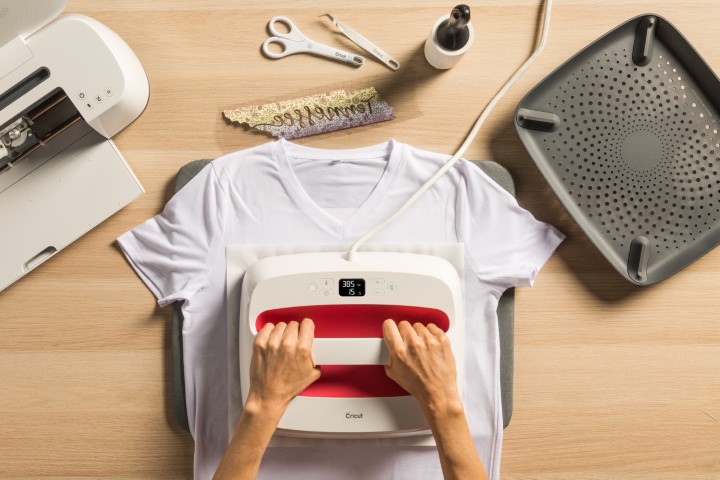

Pros
- Cricut infusible transfers are very durable. Because the transfer occurs at a molecular level within the fibers of the fabric, the images produced are permanent and free from fading, flaking, distortion, and cracking.
- There is no change to the feel of the fabric since the infusible ink chemically infuses into the fibers of the fabric.
- The colors in the final design are usually very bright and vibrant.
- The cost of the initial investment is low. Besides, the infusible ink transfer sheets, all you will need is a cutting machine and a heat press.
- The design can be layered to come up with more sophisticated pattern and color combinations.
Cons
- You are limited in detail due to the need to cut and weed the transfer sheet.
- Infusible ink sheets come in fixed solid colors and patterns. This limits your freedom in matters of detailed text, intricate images, and full-color photos.
- Cricut infusible ink restricts you to poly-based blank items with a polyester count of at least 50% and only works on white or light-colored substrates.
When to use
If you are into sublimation but cannot afford a big up-front investment, Cricut Infusible Ink transfers are the ideal option for you. It is a relatively low-cost way of doing sublimation printing without the need for investing in costly sublimation printers.
Cricut printing is for you if you will be working with simple designs with little detail and solid colors. You can embed your infusible ink designs onto items you use every day such as t-shirts, bags, pillowcases, coasters and onesies, and non-fabric blanks like infusible key tags, mugs, ID cards, mousepads, key holders.
Sublimation Printing
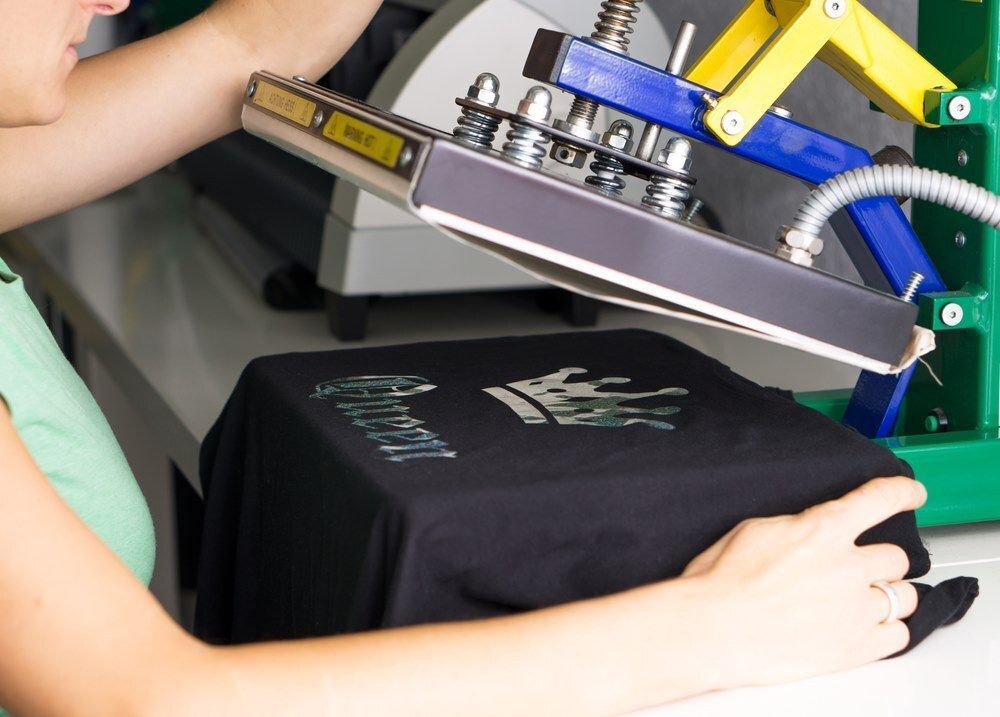

Pros
- Sublimation offers unlimited color options at no extra cost all thanks to the availability of ink in countless hues. Sublimated graphics, therefore, appear in vibrant full color, high-resolution with intricate images and superfine details. You enjoy more freedom to print your customized designs with infinite patterns and colors.
- Sublimation ink dries super fast. Therefore, you can fold it for storage or wear the garment as soon as it leaves the press without the risk of smearing the ink.
- The design is permanent and fade-free. The ink bonds with polymers in the matrix of the base material and becomes part of it. So, the image produced is long-lasting and will not fade, crack, peel, or flake even when exposed to water, detergents, or heat.
- Sublimation is suitable for seam-to-seam printing. When heat is applied to the sublimation transfer paper, the ink sublimation to all portions of the print fabric including seams, buttonholes, hems, and other intricate shapes. That said, it is possible to apply the sublimation ink to the entire fabric of a garment.
- The garment printing technique is also economical if you will be doing small quantity runs. Of course, the upfront investment required to get into sublimation is bigger due to the cost of sublimation printers, heat presses, and other materials. Even so, once you’ve acquired the equipment, the price of sublimation transfer paper per sheet is much lower than the cost of transfer paper used in say Cricut infusible ink transfers. It is, therefore, cheaper to purchase sublimation transfer paper if you have all the necessary equipment.
- The entire sublimation process is simple and straightforward. Whether you are new to the game or an old hand, the process is a cakewalk easy and does not require any special skills.
Cons
- The initial cost of buying the equipment is high. Even if you are just getting started, the up-front investment can be enormous. The cost of a good sublimation printer can cost upwards of $500 while a heat press will require you to part with at least $250. The printer also requires specialty inks which can be costly.
- Sublimation printing restricts you to limited blank items with a polyester count of at least 50%. Also, you can only transfer sublimated designs onto white or light-colored sublimation blanks since there is no white sublimation ink.
When to use
Sublimation printing should be your go-to option if you have already invested in a sublimation printer. The price per sheet of the sublimation transfer paper is low so you can save a ton with the technique.
If you want limitless options in terms of colors, patterns, and intricate design, you shouldn’t look further than sublimation printing. Also, you will not have to undergo the trouble of cutting and weeding.
For everyday items that you will use and clean constantly such as sportswear, mousepads, and kitchenware, use sublimation printing. This is because the design will resist fading, distortion, and cracking.
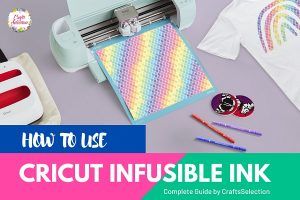
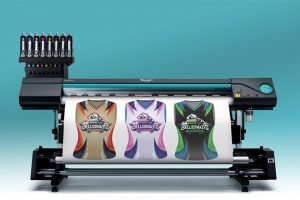

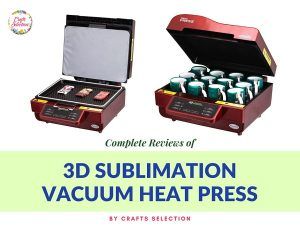

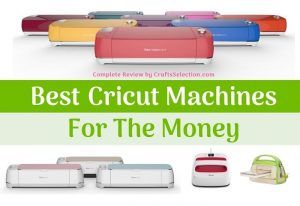
Extremely informative, precisely answering my questions regarding Cricut infusion printing versus sublimation.